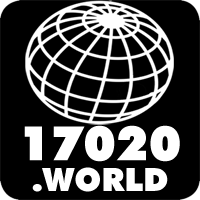When an inspection body seeks accreditation for Non Destructive Testing (NDT), the guidance provided by EA-4/15 G:2015 has to be taken into account. In this guidance of the European Cooperation for Accreditation a number of issues are addressed specificaly concerning the application of the ISO/IEC 17020:2012 requirements in the field of Non Destructive Testing.
TwinSparc 17020 Consultants has been involved in projects to help NDT-companies to comply with ISO/IEC 17020:2012 and EA-4/15 G:2015. If you need advice, or have a question, please fill out this form:
[contact-form-7 id=”127″ title=”Contact form 2-NDT”]
Liability
EA-4/15 states, that the inspection body should give special attention to liability insurance, specificaly when the inspection body uses radioactive sources to conduct inspections. There are five annexes to EA-4/15 concerning calibration and maintenance of NDT equipment.
The body shall have liability insurance that covers all risks especially arising from radiographic testing and also content of liability insurance should include probable affected sides of radioactive source accident (personnel and environmental hazards). National legislation in the countries where the accredited body operates may have requirements for liability insurance to protect personnel and environments.
Technical Manager
EA-4/15 G also states, that the technisch manager of the inspection body should have a Level III certificate, preferably issued by an ISO 9712 accredited certification body.
The person(s) responsible for NDT shall hold a level 3 certification and, whenever available, issued by an accredited certification body to EN ISO 9712, for all NDT methods included in the scope of accreditation.
Contract management
For the reviewing of contracts EA-4/15 G offers further guidance.
The contract review shall include as applicable:
- That the body has the necessary resources, equipment, qualified personnel to undertake the NDT work;
- Identification of the test/inspection method;
- Identification of any acceptance criteria;
- Any specific qualification requirements e.g. for non-standard test methods or high integrity testing;
- Any client approval requirements (particularly for non-standard methods);
- That the qualification and certification of NDT personnel is appropriate to the inspection to be carried out (This should include checking any limitations in the scope of competence certified and the resulting need for job specific training and authorisation);
- Any specific handling instructions for highly machined components;
- Any specific marking instructions, e.g. use of halogen free markers;
- Any specific reporting requirements including documentation requirements;
- Availability of drawings, inspection plans/programmes;
- Any specific quality control/monitoring arrangements;
- Client acceptance of any necessary sub-contracting.
Where activities on site are involved the review shall also include issues such as:
- Responsibility for removal of any cladding or coatings and preparation of the surface for testing;
- Access arrangements, working conditions and provision of stable working platforms;
- Hazards;
- Environmental requirements.


